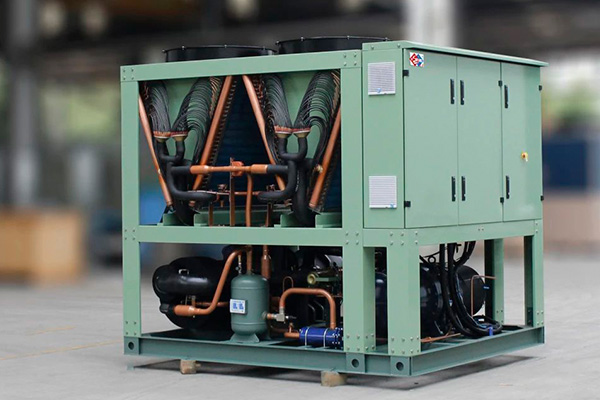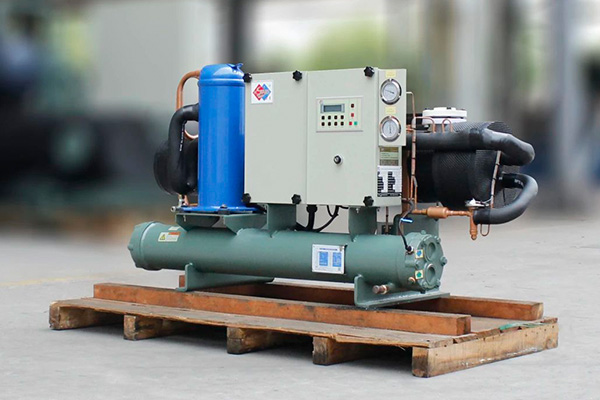As global demand for open-type chillers continues to rise, manufacturers must navigate a complex web of electrical standards, safety regulations, environmental policies, and transportation requirements when exporting their products. Ensuring compliance with these standards is essential for smooth market entry and long-term success.

1. Compliance with Electrical Standards
Electrical systems vary significantly across different regions. Exported chillers must be compatible with the target market's power supply specifications:
• North America (USA, Canada): Single-phase 120V/60Hz or three-phase 208V, 480V/60Hz
• Europe: Single-phase 220V-240V/50Hz and three-phase 380V-415V/50Hz
• Asia & Other Regions: Varies by country (e.g., China: 220V/50Hz, Japan: 50Hz & 60Hz compatibility)
All electrical components, including motors, controllers, and power connections, must align with local standards. Plugs and wiring configurations should also match the destination country’s requirements to ensure proper installation and safe operation.
2. Meeting International Safety Standards
Industrial equipment safety regulations are strict worldwide. Some key certification requirements include:
• CE Certification (EU): Ensures compliance with European safety, health, and environmental directives.
• UL Certification (North America): Verifies adherence to U.S. and Canadian electrical safety standards.
• CCC Certification (China): Guarantees that products meet Chinese safety requirements.
Critical safety design elements include:
✅ Electrical Protection: Enclosures must meet IP standards to prevent dust and moisture from damaging components.
✅ Mechanical Safety: High-speed rotating parts (fans, compressors) must have protective covers to prevent accidental contact.
✅ Emergency Shutoff Systems: Overload protection, short-circuit protection, and fault alarms should be in place for operational safety.

3. Adhering to Environmental Regulations
As sustainability becomes a global priority, many countries have imposed strict environmental standards on refrigeration equipment. Key areas of compliance include:
(1) Environmentally Friendly Refrigerants
Restrictions on high-GWP (Global Warming Potential) refrigerants vary by region:
• EU F-Gas Regulation: Phases out high-GWP refrigerants, promoting alternatives like R1234ze and R290 (Propane).
• US EPA Regulations: Gradual phase-out of HFC refrigerants such as R134a and R410A.
• China’s Carbon Neutrality Policy: Encourages the use of R32 and R290 as greener refrigerant options.
Manufacturers must ensure that their chillers use compliant refrigerants and incorporate leak detection systems to minimize emissions and meet sustainability goals.
(2) Energy Efficiency Compliance
Some countries enforce minimum energy efficiency standards for industrial refrigeration equipment:
• EU ERP Directive: Establishes minimum energy performance standards (MEPS).
• US Department of Energy (DOE): Regulates commercial refrigeration energy consumption.
• China’s GB Standards: Defines efficiency requirements for chiller units.
Understanding and complying with these regulations can prevent market entry restrictions and enhance product competitiveness.
4. Ensuring Safe Transportation and Packaging
Since chillers are large, heavy, and sensitive to environmental changes, proper packaging is crucial for international shipping:
✅ Shock-Resistant Packaging: Reinforced wooden crates or metal frames prevent movement and damage during transit.
✅ Moisture & Rust Protection: Anti-humidity films and desiccants protect components from corrosion due to long-distance shipping.
✅ Clear Labeling: All packaging should include product model, weight, handling instructions ("Do Not Tilt"), and safety warnings to comply with customs and transport requirements.
✅ Reinforced Support Structures: Large chillers should have vibration-dampening systems to ensure safe lifting and unloading.
Conclusion
Exporting open-type chillers requires strict adherence to electrical, safety, environmental, and logistics standards. By ensuring compliance, manufacturers can avoid trade barriers, enhance product reputation, and expand their presence in the global market. Investing in regulatory research and advanced technology not only strengthens competitiveness but also provides customers with efficient, sustainable, and reliable cooling solutions worldwide.

